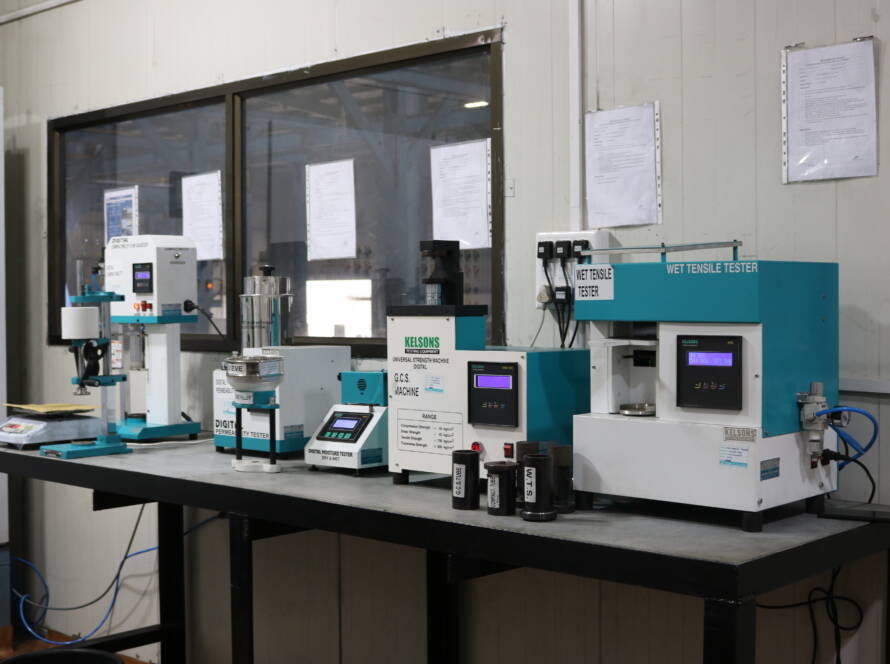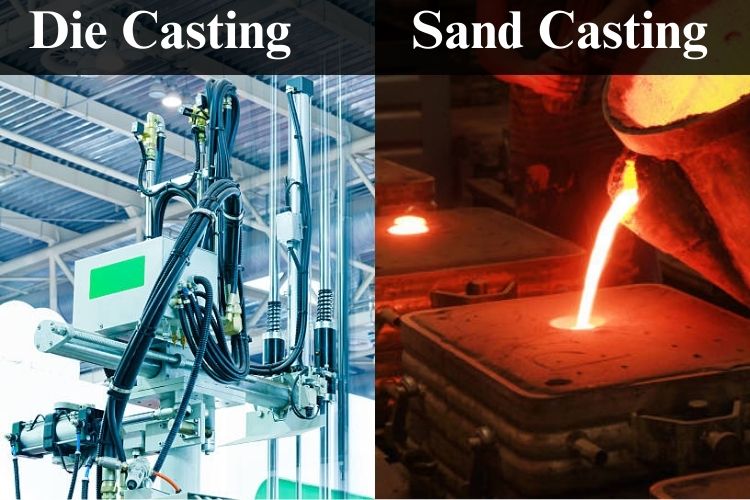In India’s fast-growing manufacturing sector, metal casting continues to be a basic process for forming the industrial backbone, not to be underestimated. Casting makes metal components with the inherent complexity demanded in industry sectors such as automotive and railways, aerospace and agriculture, and does so with the accuracy and cost efficiency of mass production.
It is important to grasp the Types of Casting Processes industry utilizes in a metal foundry, not only for engineers and industrialists but also for students, buyers, and supply chain professionals, in providing the understanding they need to make decisions.
This blog explains the most common types of casting processes, how they are used, and their application in industry. Whether you are looking to outsource casting for your industrial application or simply seek to know the basics, this blog will introduce you to the more essential processes used today in Indian foundries.
What Is Metal Casting?
Before we look at the different types of casting processes, it is first important to understand what casting is. Metal casting is a production process starting with the metal in a molten state. Then the metal is poured into a containing medium to create the shape or form.
After cooling and solidification, the part will be removed from the containing medium and may or may not receive an additional finishing step. Due to this process, parts can be made in bulk that are difficult and/or expensive to machine.
1. Sand Casting
One of the oldest and most widely used casting processes by foundries in India is sand casting. In sand casting, the container made of sand is used to make the casting. The molten metal is poured into the sand container. Once the molten metal cooled, we needed to destroy the sand container to retrieve the casting.
Advantages:
- Low tooling costs
- Suitable for large components
- Opportunities for either ferrous/ non-ferrous metal
Applications: Automobile engine blocks, pump housings, and components for agricultural equipment.
Of all the types of casting processes, sand casting process is likely the best option if you want custom or low-volume production, which makes it a top choice for many Indian foundries.
2. Investment Casting (Lost Wax Casting)
Investment casting, or lost wax casting, is a high-precision casting process that produces parts that have both excellent surface finish and dimensional accuracy. A wax model of the part is coated in a ceramic shell. Once the ceramic shell has hardened, the wax is melted out of the shell to provide a cavity for the melted metal.
Advantages:
- High precision and accuracy
- Excellent surface finish and perfect appearance
- Good for complex and intricate shapes and wall thicknesses
Applications:
Turbine blades, dental implants, jewelry, and aerospace components.
Investment casting is regarded as a premium process of all the types of casting processes because it can make near-net shapes and can make parts with minimum post-processing.
3. Die Casting
Die casting is a process defined by high-speed and pressure for non-ferrous metals like aluminum, magnesium, and zinc. Die casting is defined as injecting molten metal into a steel mold (die) at high pressure.
Advantages:
- Good dimensional stability
- Fast production, as one part is produced every few seconds
- Smooth surfaces and thin wall sections are achievable
Applications: Electrical housings, engine blocks, and furniture.
Die casting is considered to be one of the types of Casting Processes, which allows the production of a high number of small to medium-sized metal parts, particularly in India.
4. Centrifugal Casting
Centrifugal casting is a process in which molten metal is physically poured by hand into a spinning mold. When the mold spins, it creates an inertial force, making it easier to cast the metal fluid more uniformly while allowing contaminants to be pushed out of the final production part. The result is a dense, uniform, and solid-state piece that’s durable in its final properties.
Advantages:
- High structural integrity
- Fewer inclusions and defects
- Ideal for cylindrical parts
Applications: Pipes, bushings, cylinder liners, and bearing shells.
Centrifugal casting, one of the types of casting processes, comes into play to deal with a cast metal part where strength and resiliency are paramount; a good example would be for hydraulic or heavy industrial parts.
5. Shell Molding
Shell molding is a modern version of sand casting. The sand is coated with resin, which shapes around a heated metal pattern to create a thin-walled shell, which is used in the traditional method of pouring a molten metal into the shell mold.
Advantages:
- Great surface finish compared to traditional sand casting
- High-dimensional accuracy
- Lower labor costs due to automation
Applications:
Valve bodies, gear housings, camshafts.
Shell molding is a growing process in Indian foundries as an alternative to sand or die casting, as it allows for semi-automated processing and efficient production of medium to large batches.
6. Permanent Mold Casting
Permanent mold casting, as the name implies, uses molds that are made out of metal; the molten metal is poured into the reusable mold to produce similar results consistently.
Advantages:
- Higher dimensional accuracy
- Improved mechanical properties
- Faster production cycles
Applications: Piston, gear blanks, and cookware.
This method is one of the more sustainable types of casting processes since there is a reusable mold, which also helps to save long-term costs in the Indian manufacturing sector.
7. Vacuum Casting
Vacuum casting, as the name implies, is a method where molten metal enters the mold using the vacuum pressure differential. This minimizes gas porosity and adds quality to the final cast.
Advantages:
- Low porosity and defects
- Appropriate for reactive metals
- Excellent for thin-walled structures
Applications: Aerospace, defense, and medical device components.
More niche in the types of casting processes, vacuum casting is key for high-end applications with completed castings of the highest quality, such as India’s emerging aerospace market.
Challenges Faced by Indian Foundries
Even with all the options for casting processes, Indian foundries still have challenges in:
- Continuity of power supply
- Quality of raw materials
- Quality of labor
- Environmental compliance
By utilizing technologies such as CAD, simulation, and implementations of automated handling of molds, Indian foundries can lessen these challenges to follow global best practices.
Sustainable Casting: The Future in India
Environmental policies and awareness have been forcing foundries to look for more sustainable types of casting processes. Foundries are now investigating reusable mold systems, waste heat recovery, and sand reclamation to reduce emissions and resource consumption.
Furthermore, advancements today, specifically the ‘Make in India’ movement and foreign investment in automotive manufacturing, have enabled foundries to clean casting and implement more high-tech processes.
Final Thoughts
Casting is more than pouring metal. It is a science that encompasses the weighing up of properties of materials, the complexity of a design, economics, and production needs. Recognising that there are types of casting processes can provide industries in India the basis to make informed choices that develop efficiency, maintain product quality, and curtail costs.
If your need is to produce bulk quantities of machine components or high precision aerospace parts, there will be types that will fill your needs. The foundry sector in India is still growing. The industries that survive by adapting their quality and innovation to machining challenges and changes today are those that are using suitable, viable casting sources to smooth this transition.
Therefore, we invite you to casting experiences at RM Technocast, where you can get reliable and reproducible casting solutions engineered by the world’s best. RM Technocast has established itself as a trusted name for high-quality, durability, and timely deliveries.
If you want to know more about the type of casting process, then we would be pleased to have you gain casting experience via rmtechnocast.com to know the return on casting.
FAQs
1. What are the main types of casting processes used in metal foundries?
The most common casting processes include sand casting, investment casting, die casting, centrifugal casting, shell molding, permanent mold casting, and vacuum casting. Each method offers unique advantages in terms of cost, precision, and production volume.
2. Which casting process is best for high-volume production?
Die casting is ideal for high-volume production due to its speed, dimensional accuracy, and ability to produce smooth surfaces with minimal post-processing.
3. What is the most cost-effective casting method?
Sand casting is generally the most cost-effective option, especially for low-volume or custom production runs, as it requires minimal tooling and setup costs.
4. Which casting process gives the best surface finish?
Investment casting (lost wax casting) provides an excellent surface finish and high dimensional accuracy, making it suitable for precision components like turbine blades and aerospace parts.
5. What is the difference between permanent mold casting and die casting?
Both use reusable molds, but die casting injects molten metal under high pressure, while permanent mold casting relies on gravity to fill the mold. Die casting suits smaller, precise parts, while permanent mold casting is ideal for medium-sized components.
6. Why is centrifugal casting used in foundries?
Centrifugal casting is preferred for cylindrical components such as pipes, liners, and bushings because it produces dense, defect-free metal structures with high strength.
7. What are the advantages of shell molding over sand casting?
Shell molding provides better surface finish, higher dimensional accuracy, and allows partial automation, reducing labor costs compared to traditional sand casting.
8. Which casting process is suitable for aerospace components?
Vacuum casting and investment casting are widely used in aerospace due to their ability to produce lightweight, defect-free parts with tight tolerances and high strength.
Read more: Sand Casting Process: A Step-by-Step Guide


